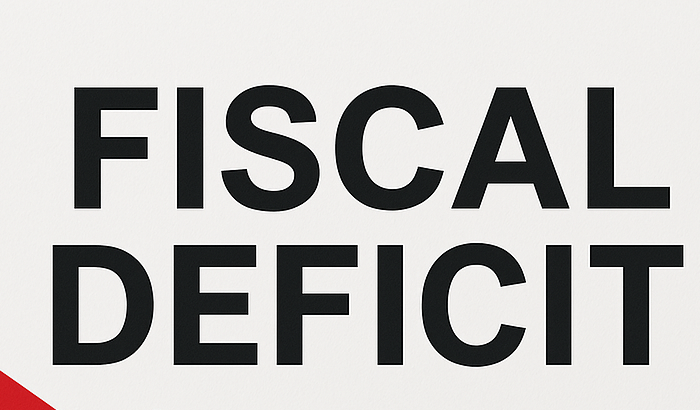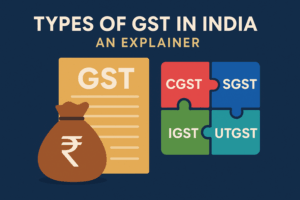
Many of us find it difficult to manage household finances. Now, spare a thought for governments that juggle many balls to keep the economy humming. For instance, the government of India outlines its spending targets for various heads in the annual budget. Government-driven capital expenditures include public infrastructure projects, defense spending, grants and subsidies, and education.
While the government is mandated to spend, it also earns revenue from direct and indirect taxes and interest receipts. However, as with households, expenses often outweigh income, resulting in a deficit or shortfall. The budgetary deficit that a government runs is known as fiscal deficit.
Fiscal deficit is an important economic indicator that signals a country’s financial health. Understanding the concept of fiscal deficit is essential for grasping the broader implications of fiscal policy and economic management in the Indian context.
As India navigates its developmental goals, fiscal deficit often dominates discussions about economic stability, growth, and sustainability. This blog post discusses fiscal deficit, its calculation, and its economic implications.
What is fiscal deficit?
Fiscal deficit occurs when a government’s total expenditures exceed its total revenue in a fiscal year. The shortfall signifies how much a government borrows to finance its spending.
In simpler terms, it indicates how much the government spends compared to what it earns through taxes and other revenues. The concept of fiscal deficit is vital as it helps gauge a country’s financial health and ability to manage public resources effectively.
In India, fiscal deficit has been the focus area for policymakers and economists for the past few years since the government embarked on its mission to control fiscal deficit. The fiscal tightening undertaken by the government reflects its focus on controlling spending and its efforts to increase revenue over time.
A persistent, uncontrolled fiscal deficit can push up national debt and inflationary pressures, impacting overall economic stability. Hence, policies tailored to control borrowing are essential to boosting a country’s financial health.
How is fiscal deficit calculated?
Calculating fiscal deficit is relatively straightforward. The formula used is:
Fiscal Deficit = Total Expenditure − Total Revenue
Where:
- Total expenditure includes revenue expenditure (day-to-day operational costs of the government, such as salaries, etc.) and capital expenditure (investments in infrastructure and public development).
- Total revenue comprises income from taxes (like GST and income tax) and non-tax sources (such as dividends and interest receipts).
The fiscal deficit formula can be expanded as below for a clearer understanding.
Fiscal Deficit = (Revenue Expenditure + Capital Expenditure) − (Revenue Receipts + Capital Receipts)
The calculation provides insight into how much the government needs to borrow to meet its financial obligations for a given fiscal year. It throws light on the national debt, which makes managing fiscal deficit very important.
Components of fiscal deficit
Understanding fiscal deficit requires examining its components, which can be broadly categorized into income and expenditure:
Income components
The following are the major income sources for the central government in a fiscal year.
- Tax Revenue: This includes income from direct and indirect taxes:
- Goods and Services Tax (GST)
- Income tax
- Corporate tax
- Non-Tax Revenue: This includes the government’s non-tax revenue
- Divestment proceeds
- Dividends from public-sector enterprises
- Interest receipts on loans
- Other non-tax revenues, like fees and fines
While these are some of the significant income sources for the government, there are other sources as well.
Expenditure components
Interestingly, government expenditure is often more than what it earns as income. This is why most governments worldwide, including developed countries like the US, run a fiscal deficit. Here are the top sources of expenditure for the government of India.
- Revenue Expenditure: This is the cost incurred in running the day-to-day operations of the government machinery:
- Salaries and pensions for government employees
- Subsidies and grants for various programs
- Interest payments on existing debt
- Capital Expenditure: This involves spending aimed at creating future benefits, like:
- Infrastructure projects (roads, bridges)
- Investment in public services (healthcare, education)
- Defense procurement spending
While these are the top expenditure heads of the government of India in the past few years, you can refer to the Union Budget document to get a detailed view of the government’s expenditure profile last year and the fiscal deficit roadmap for the years ahead.
How does the government balance the fiscal deficit?
Balancing the fiscal deficit is a complex task that requires revenue and expense optimization, strategic planning, and execution by the government. Here are some of the methods employed by the government of India:
- Increasing Revenue: Governments can increase revenue through tax reforms, introducing new taxes, or increasing existing ones. For instance, expanding the GST base or improving tax compliance can significantly boost revenue.
- Reducing Expenditure: The government can manage spending more effectively by reducing unnecessary expenses or optimizing existing programs. This might involve cutting subsidies or streamlining public-sector employment.
- Public-Private Partnerships (PPPs): Encouraging private investment in public infrastructure can lessen the government’s financial burden and improve quality.
- Borrowing: Governments may resort to borrowing from domestic or international markets. While this can be a quick fix for financing needs, it must be done sustainably to avoid excessive debt accumulation.
- Disinvestment: Selling stakes in public-sector enterprises can generate immediate revenue for the government. This helps raise funds and improve the efficiency of state-run enterprises.
- Monetary Policy Tools: The Reserve Bank of India plays a significant role in managing fiscal deficits by controlling money supply and interest rates, thus indirectly impacting government borrowing costs.
Achieving a sustainable fiscal deficit requires a balanced approach that addresses immediate financial needs and long-term economic stability.
Conclusion
The concept of fiscal deficit is pivotal in understanding India’s economy. As the country grapples with developmental challenges, managing fiscal deficit becomes increasingly essential. While running a fiscal deficit may stimulate growth through investments in infrastructure and social programs, persistent deficits can fan inflation and increase national debt.
India has consistently tried to reduce its fiscal deficit over the years, with mixed results. Policymakers focus on enhancing revenue through reforms while ensuring prudent expenditure management. By striking this balance, India can achieve sustainable economic growth while maintaining fiscal discipline. Clearly, this will go a long way to boost confidence in investors and citizens alike.







